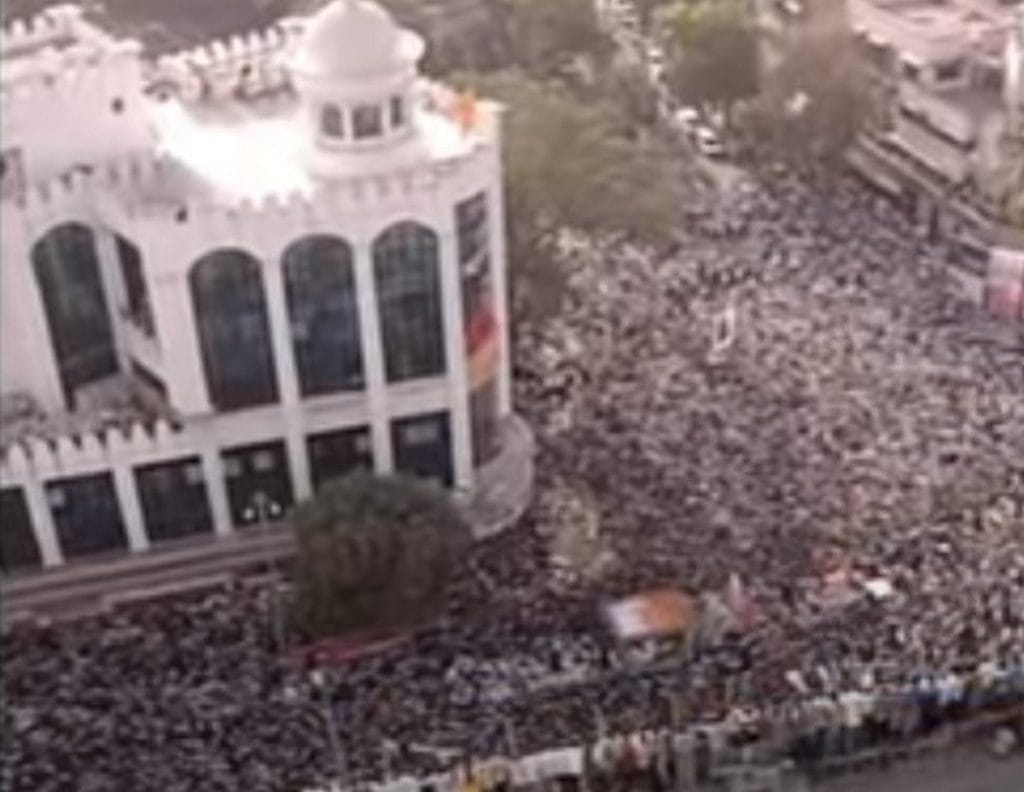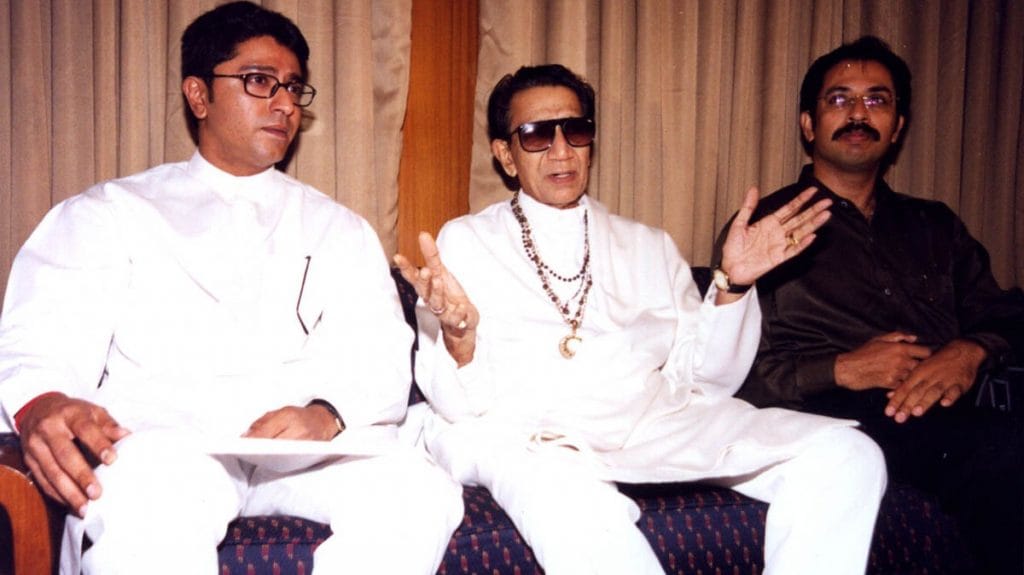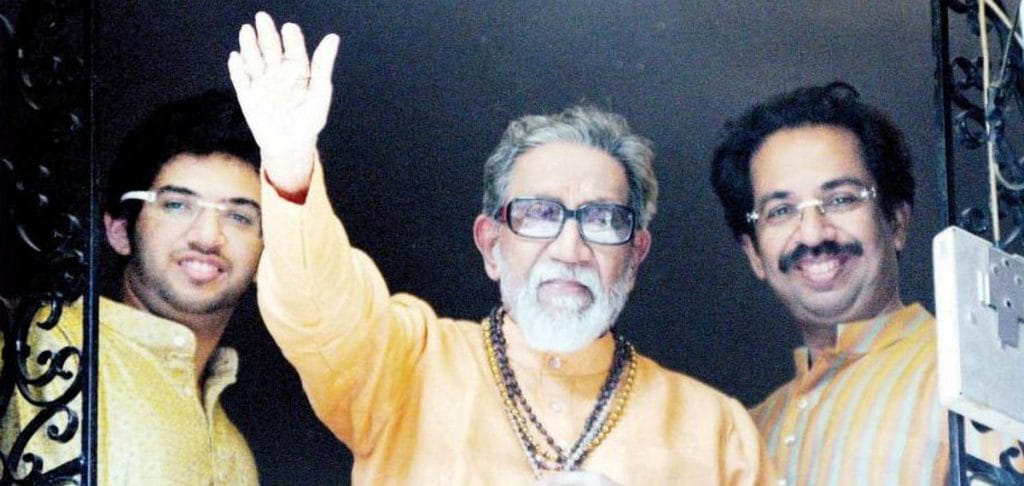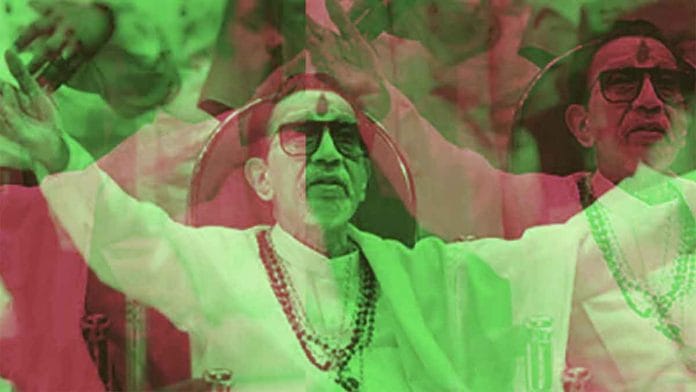Mumbai: Twelve years ago, when Bal Thackeray’s corpse—draped in saffron with his eyes covered in the trademark dark glasses that he always wore—was brought to Shiv Sena Bhavan, the party’s headquarters, there was a near stampede.
On the road outside, an endless crowd bowed in unison as their leader’s body was carried away in a tall vehicle decked in flowers. Some blew kisses, some waved, some shut their eyes with their heads to the skies, their hands joined in prayer. There was pushing, shoving, jostling for space, but no one seemed to even realise it.
“Do you also love him like I do?” asked a woman who introduced herself as Rose D’Souza from Colaba, turning to another woman beside her. The woman offered a slight smile and nodded her head in affirmation.
In the buildings around the white stone Shiv Sena Bhavan, residents opened their homes and balconies to strangers who wanted a final glimpse of the man who brought Mumbai to a standstill, even in death.

This was the legacy of Bal Thackeray who never occupied any formal position of power, but ruled Mumbai with unquestionable authority.
Today, on Bal Thackeray’s death anniversary, 17 November, there are two claimants to his legacy.
One is Eknath Shinde, who occupies Maharashtra’s top chair of power. The other is Thackeray’s son, Uddhav, Shinde’s predecessor as chief minister.
But neither of them has the magnetic hold over Mumbai that the senior Thackeray had. The leaders are divided, the cadres are divided, the followers are divided, and so is the power.
Sweeping changes in Maharashtra politics and demographics have ensured that neither Shinde nor Uddhav Thackeray truly align with the same ideology that Bal Thackeray once stood for. However, what is common between the three leaders is the contingency of their ideology on contemporary political realities.
Also Read: As Thackerays come full circle with socialist ‘friends’, a look at political compulsions then & now
Seizing a sentiment
Bal Thackeray founded the Shiv Sena in 1966 with the mission of reclaiming Mumbai for Maharashtrians. It was six years since Maharashtra had attained statehood, and the influence of the Samyukta Maharashtra Samiti, which had spearheaded the movement, was on the wane.
However, the Samiti’s fierce fight for separate statehood on linguistic grounds and Mumbai as the capital had sparked a nativist pride. And Thackeray seized the opportunity to organise this sentiment through the Shiv Sena.
Thackeray used Marmik, a weekly he founded in 1960, to campaign against the rising number of non-Maharashtrians in Mumbai’s business and salaried class, publishing a weekly list of such people in senior government and private sector jobs, titled “Vacha ani thanda basa (Read and sit quiet)”. Such efforts laid the groundwork for the formation of the Shiv Sena — Chhatrapati Shivaji’s army.

In the early days of the Shiv Sena, Bal Thackeray routinely lashed out at South Indians, Gujaratis, Marwaris, and North Indians alike, accusing all of them of using Mumbai for personal gain and depriving Maharashtrian Mumbaikars of opportunities.
And yet, on 18 November 2012, a day after Bal Thackeray’s death, the crowd that gathered to bid him a final adieu was not limited to Maharashtrians.
From Marathi manoos to Hindutva
During his most powerful years, Bal Thackeray assumed the role of the ultimate dispenser of justice in Mumbai. His word carried enough weight to bend governments, and Matoshree’s doors were always open for supplicants seeking his assistance.
A 2019 biopic on Bal Thackeray, produced by senior Rajya Sabha MP Sanjay Raut, depicted how the Shiv Sena chief’s durbar purportedly worked. The film shows Bal Thackeray promising to help a Muslim family displaced by the 1992-93 Mumbai riots and inviting them to perform namaz at his residence.
However, in the same riots, Bal Thackeray’s Shiv Sainiks reportedly led protests against Muslims, pelted stones at their homes, attacked them with swords and sickles, and damaged mosques. In 1998, the Srikrishna Commission, formed to probe the riots, indicted Thackeray for inciting violence.
By then, the Shiv Sena had made a conscious call to move beyond its sons-of-the-soil agenda. It embraced Hindutva as its primary ideology, expanding its outreach to all Hindus, not just Marathi manoos (native Marathi speakers). The pro-Hindutva ideology operated in tandem with an anti-Muslim stance in the early 1990s, both before and after the riots. For instance, Bal Thackeray made a big production out of questioning loudspeakers on top of mosques, starting ‘maha aartis’ at temples in retaliation.
In 1993, the Shiv Sena launched Dopahar ka Saamana, the Hindi counterpart of its Marathi mouthpiece Saamana to reach a broader cross-section of voters. The Shiv Sena could no longer afford to ignore Mumbai’s changing demography. It was no longer politically fruitful to keep up an anti-migrant diatribe.
Gradually, the Shiv Sena’s aggressive stance, both on and off the streets, against non-Marathis as well as non-Hindus, started to mellow.
In 2012, during one of Bal Thackeray’s last public appearances, he even claimed that his party was never against Muslims and had in fact protected the community’s colonies during the riots. He said his Sainiks only confronted Muslims who acted against Hindus.
Identity crisis
After Bal Thackeray’s death, the Shiv Sena’s identity went through a prolonged transition period. His son Uddhav and grandson Aaditya walked a tightrope — striving to leave their mark on the party they had inherited without upsetting its core base.
In the 2017 Mumbai civic elections, the Shiv Sena fielded five Muslim candidates, two of whom won. The party also stopped its violent anti-Valentine’s Day protests. Goals such as making Mumbai a 24-hour city with a thriving nightlife occupied as much space on the party’s manifestos as traditional concerns such as property tax rebates and flood prevention pumps.

Nevertheless, the party continued to revisit its rabble-rousing roots from time to time, especially given the challenge of protecting its turf from an aggressively expanding BJP, which came to power in 2014 after breaking its 25-year-old alliance with the Shiv Sena, only to join hands again.
In October 2015, Shiv Sainiks protested tooth and nail against a concert by Pakistani ghazal singer Ghulam Ali in Mumbai. The same month, they also threw ink at Sudheendra Kulkarni, the organiser of a book launch for former Pakistan foreign minister Ahmed Kasuri. In 2017, the Mumbai civic polls took on a Marathi versus Gujarati dynamic with the Shiv Sena and BJP, then allies in the state government, launching acerbic campaigns against each other.
Then, after the 2019 assembly elections, the BJP refused to grant the Shiv Sena a 50 per cent share of the power. Uddhav Thackeray retaliated by leading the Shiv Sena out of its alliance with the BJP and straight into the arms of the enemy— the Congress and Nationalist Congress Party (NCP)— to form the Maha Vikas Aghadi (MVA) government. On 28 November 2019, Uddhav took oath as Maharashtra CM.
In response to accusations that he abandoned his father’s ideology, Uddhav Thackeray asserts that his ostensibly secular politics aligns with what Bal Thackeray had stood for.
Uddhav’s supporters also highlight how, for strategic reasons, Bal Thackeray had collaborated with the Congress in the 1960s to neutralise communist leaders in Mumbai— indeed, the Shiv Sena was known as the ‘Vasant Sena’ when Congress leader Vasantrao Naik was the chief minister.
With his new allies, Uddhav Thackeray navigated ideological differences deftly despite a few tense moments, such as when he reportedly warned Congress leader Rahul Gandhi against insulting Hindutva ideologue Vinayak Damodar Savarkar.
He also set about differentiating his brand of Hindutva from that of the BJP. He claimed on several occasions that the BJP’s Hindutva was ritualistic, while the Shiv Sena’s was substantive.
But Uddhav may not have fully anticipated the discontent within the Shiv Sena over the MVA alliance. Ultimately, this angst was a factor in the majority of the party’s MLAs rebelling against him last year.
Also Read: Mumbai’s Shivaji Park: Colonial-era roots, Sena’s birthplace, hallowed ground for politics
A new ‘heir’?
Bal Thackeray’s Shiv Sena split in 2022 when Eknath Shinde led a rebellion to topple the Uddhav Thackeray-led MVA. The new faction then formed a government with the BJP, with Shinde as CM.
The Shinde faction has now staked claim as the true proponent of Bal Thackeray’s ideology—it is in alliance with the BJP and it is politically opposed to forces traditionally against Hindutva parties.
However, the rebellion was not as much for ideology as it was for power. Within the MVA, Shiv Sena MLAs and many MPs confronted the dilemma of facing voters after not just aligning with their traditional adversaries but also criticising the former allies who helped them get elected.
Now, this dissonance permeates even the new Shiv Sena, considering that half of the NCP — the same party Sena rebels had criticised when aligning with the BJP — is now part of the ruling coalition.
Bal Thackeray always enjoyed his autonomy even within a political alliance, commanding the upper hand. And while Shinde on paper has checked this box too by being CM, his Shiv Sena doesn’t necessarily have the upper hand in the alliance.
As Eknath Shinde himself conceded in January this year, they are all “Modi’s men” — something that Bal Thackeray would likely have never said.
(Edited by Asavari Singh)






